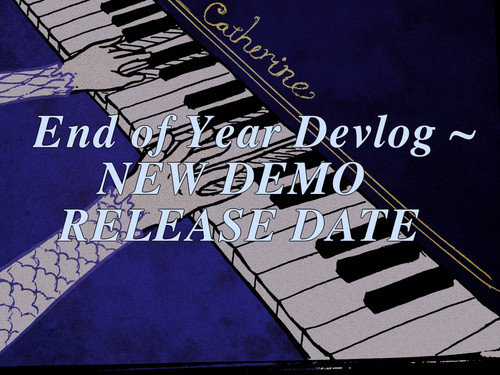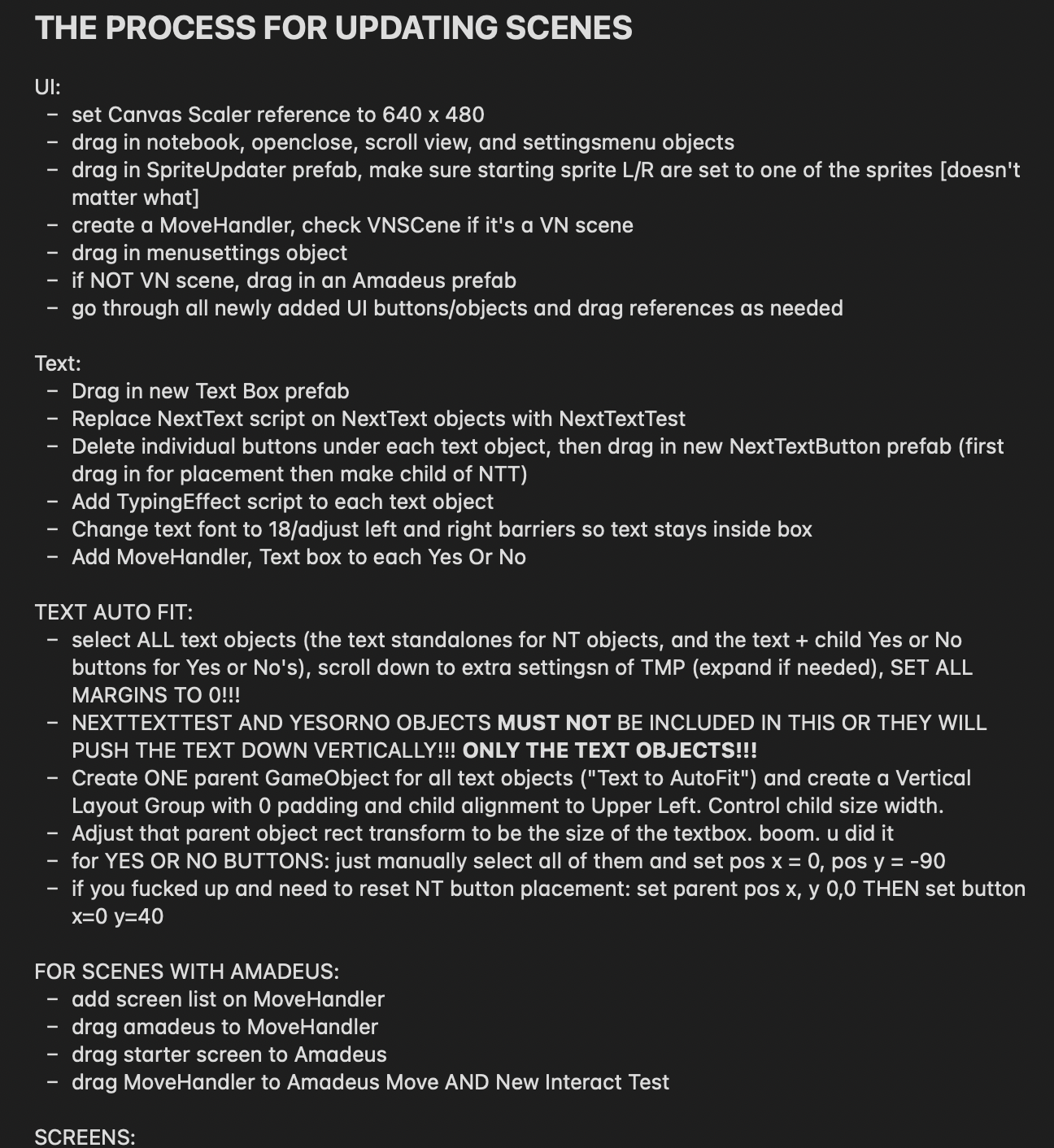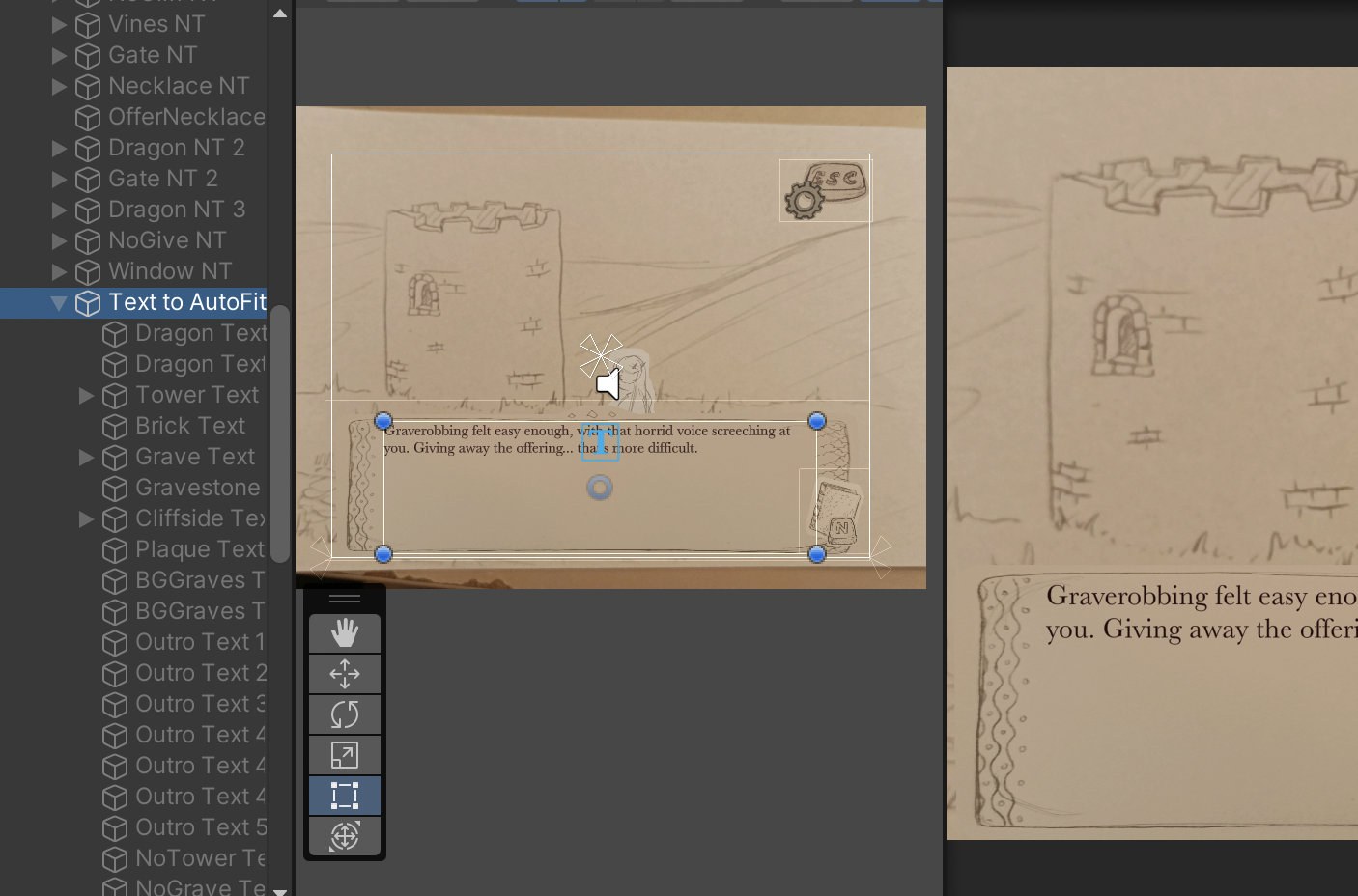2023 Year's End Devlog + NEW DEMO RELEASE DATE

My goal for this month was to completely remake the demo with my new mechanics and have it in the private playtesting phase.
Actual status: the demo is currently about 90% remade, and I should have it in front of playtesters next week. My excuse for not completely meeting my goal is I have also been spending this month producing and mastering the GameBoy Advance-themed concept album THOUSANDS OF PIXELS IN YOUR HANDS, which drops 1/1/24! My piece for it samples sounds from a GBA cartridge surgery and is based on the Castlevania: Circle of the Moon soundtrack.
That aside, I am happy to announce that;
A new demo for Amadeus will release Friday, February 2, 2024!
With the upcoming demo, this itch.io game page will be rebranded and renamed to reflect the title of the full release - A Riddle for Thee ~ Episode 1: Waltz. I didn't think too far ahead when I initially named this page, because releasing the full game felt very far off back then. But at this point, it's definitely going to be a reality. I've spent about 6 months laying the groundwork I need to make it happen, so I want the new demo to lead smoothly and directly to the release of Episode 1 (and beyond).
There will be several changes and additions in the new demo in addition to all of the new mechanics. The currently live project was a proof-of-concept; this new project really is a demonstration of what the full game will be. Look forward to it!!
The main point of this devlog is just to announce that. So mark your calendars! ...For those interested, though, I'll still go over the following topics in more detail below:
- Rebuilding The Demo: Process
- Rebuilding The Demo: Current Status
- Recreation/Inspiration (as always!)
Resources: linktr.ee/amadeusgame | amadeus-game.com
Now, on to the details!
Rebuilding The Demo: Process
The overall process can be distilled to a very simple (lol) 3-step process:
- Take a hammer to the old demo
- Rebuild and take notes
- Use the process of rebuilding to finally fix big underlying problems you've ignored for the past year and revel in how much easier your life will be moving forward now
1. Take a hammer to the old demo
Dismantle everything dependent on the old scripts that are all connected to each other. Purge.
This part was difficult. I had built so many new mechanics in my test scene, but in order to implement them in existing scenes I had to replace all of the old scripts that were all hooked up to each other and reduce the game to an unplayable state before I could start rebuilding. What made this so difficult was that it felt like moving backwards: I was turning a playable (if obsolete) scene to an unplayable (but necessary to add all the cool new stuff) state. In the middle of this it really felt like I wasn't accomplishing anything at all and that I was moving farther away from my goal, even though that is completely untrue.
2. Rebuild and take notes
Start inserting new scripts and prefabs - taking notes along the way. INCLUDING notes that go "whoops, I didn't realize from my test scene, but X is broken now."
I cannot over-emphasize the importance of taking notes at this stage. I was adding interact mechanics, text mechanics, movement mechanics, UI updates. There was so much to rebuild for each scene, and the only way to make sure I was rebuilding each scene the same way was to take notes of my process and follow it for each new scene.

Please don't actually read this image, as it reveals a lot more than I would strictly like it to in terms of how well put-together this game is.
I started with the "simplest" scene (one that is a pure visual novel scene, only relying on the text and UI stuff with no movement or player interaction save for advancing the text) and took step-by-step notes of everything I needed to do to make it playable again. What prefabs do I drag in and where? What reference objects need to be dragged in to which scripts? Then, once it was rebuilt, I moved on to the shortest interactive scene and made additional sections in my notes for movement and interaction mechanics. I also - VERY ESSENTIALLY - created 2 more sections: "Bugs (game-breaking)" and "Bugs (quality of life)." Here I jotted down everything that was messed up or broken in these new scenes that I didn't anticipate from my test scene.
Because, boy, even if everything works perfectly smoothly in the test scene, there will be new bugs that arise when you go to implement in other scenes. There was one issue with handling transitions from full-body screens to "close-up" screens that only arose in one scene that has specific properties the others don't. It took an absurd amount of time to troubleshoot and, in the end, was solved by adding two lines of code to one script changing the value of a single bool. That was one of those problems that wasn't satisfying to resolve... it just made me salty that such a persistent problem had such an obvious solution. On the plus side, I am now much more practiced with using the animator to isolate/identify problems, so next time a similar issue comes up it should be resolved much more quickly!
When rebuilding, I learned to first try to get everything mostly working and just write down the bugs I knew of to deal with later, not letting the process of troubleshooting every issue interrupt the primary task of Putting Everything Back Together But Better. If I let fixing bugs stand between me and finishing the rebuild, I would never finish the rebuild. Write it down and fix it later.
3. Fix big underlying problems
As a lazy person, I am not incentivized to fix big underlying problems if the game works as it is. This is why there is a lot of spaghetti in my game's code.
However, also as a lazy person, I am incentivized to make my own life easier when I don't feel like doing repetitive things over and over. So in the process of rebuilding the demo, it became clear that I was having to do certain very manual things way too often. Like manually resizing the text box for every individual line of text in the game. (Yes, that is really how it was put together originally...) Since I had to figure out how to use vertical layout groups for my scrolling text backlog that grows as you read more and more text, it was much easier to use the same principle to make a textbox layout group and just have all of my text objects as children to that parent, which would automatically resize them to the proper dimensions. So much easier to implement, and ALSO so much easier to tweak moving forward if I need to!

This is just a single example, but there are a lot of things like this that I never would have fixed if I didn't do the important first step of taking a hammer to the old demo and rebuilding. Everything was too interconnected and too dependent on the way I did things originally, bad habits and all. But since I had to tear it apart anyway to add the new mechanics I built, it ended up being easier to fix a lot of big issues like this, too.
Most of these fixes aren't going to be immediately obvious to the player, but I'm hoping it'll be obvious in aggregate that there's a bit more elegance in how things are put together now. A seasoned programmer would still look at my code and pass out, but compared to before, it's all much more wisely constructed. Hooray for learning!
Rebuilding the Demo: Current Status
New mechanics are implemented in every scene except for 1. That last scene should not present new problems that haven't already been noted or addressed from the previous ones, but never say never as I have learned. I still anticipate this going quickly, at which point I'll put it in front of playtesters for feedback on how it all feels and fix what's still egregiously broken.
The meat of the next month and some change will then be dedicated to art, narrative, and polish. I have already spent more time than I really hoped to purely on the mechanics, and now that I have baked my cake so to speak it's time to decorate it. I want to replace and update a lot of art assets now that I have a concrete concept for art direction. I want to tweak certain dialogue and descriptive text to foreshadow and set up plot points I've decided on. I want to add more fun things for the player to click on. I don't know how much I'll be able to add before the demo release, but at the bare minimum, there are many art assets and at least a couple music assets I'm excited to work on.
Even if it's the same core game, I really want this new demo to feel like a whole new experience. I'm really excited about it. I hope you are too!

Recreation/Inspiration
It never stops being important to acknowledge other media that inspires and influences me! It also never stops being important to do things for fun even when you're busy.
Truthfully I did not read more of Tsukihime this month like I expected to. I had a lot of Christmas presents to make and no time to dedicate to that much of A Commitment. Instead, I DID set aside time to check out a couple other indie/solo projects on itch - ever since I met and talked to a bunch of small indie devs at Seattle Indie Expo, I've really enjoyed looking at the work of other small & solo teams. It's affirming to know other people are also out there doing a ton of work by themselves, and that a one-person team can still make really incredible games.
This month I checked out:
- It Paints Me by Endysis. A short gothic horror VN. I really enjoy visual novels by creators with strengths that I lack, I find them both inspiring and insightful. The visual and sound experience in this was really cohesive in a way that none of my work is (I am, for better or worse, very much a "go in thousands of directions all at once and see how it comes together" kind of creator) - the illustrations and sounds were incredibly effective in coming together to set the tone of the story.
- Karambola by Holy Pangolin. A very unique point-and-click puzzle game. I was immediately struck by the way this game uses two distinct styles of illustration "against" one another, which is exactly what I intend to do in Amadeus. It was also a really good reference for communicating feedback to the player using audio/visual cues and not words. I will of course be using many words, since I am writing a visual novel, but in games learning how to communicate gameplay without a wall of text instruction manual is of dire importance. This was a really cool experience.
- Kit (demo) by Endysis. I had this on my radar since I liked It Paints Me so much, which was made for a game jam; I wanted to see what this creator would do in a project completed on their own schedule. I was absolutely enamored. I meant to only start it out at around 10pm and ended up bingeing the whole demo because I simply couldn't put it down. There are, in fact, many things from this game that I am also exploring in Amadeus, but elaborating further risks spoiling one or both games. The use of music in storytelling in particular was both moving and inspiring. If you like gothic horror I cannot recommend this enough.
That is a wrap for this month, and this year. I hope you all had/are having a wonderful holiday season. I don't think I'll be posting another devlog before the new demo drops, so... I hope you enjoy it when it's ready!!
Amadeus: A Prologue For Thee (Prototype)
The moon Aska draws full.... are you prepared to make a deal with a witch?
| Status | In development |
| Author | ArcanaXIX |
| Genre | Visual Novel, Puzzle |
| Tags | 2D, Fairy Tale, Fantasy, Magic, Mystery, puzzle-game, Unity |
More posts
- New Demo Coming Friday - And New Game Page!Feb 19, 2024
- New Demo Progress UpdateJan 29, 2024
- November Devlog: Celebrating Invisible ProgressNov 28, 2023
- October Devlog: Substantial Progress and a New VisionOct 31, 2023
- September Devlog: Full Episode 1 Design FinalizedSep 26, 2023
- August Devlog: Re-Orienting Toward a Full GameAug 29, 2023
- Demo is Released!Jul 31, 2023
Comments
Log in with itch.io to leave a comment.
Gonna be keeping an eye out for this in february, good luck! (And thank you for the shoutout!)
Thank you so much! Good luck on your upcoming releases too!!